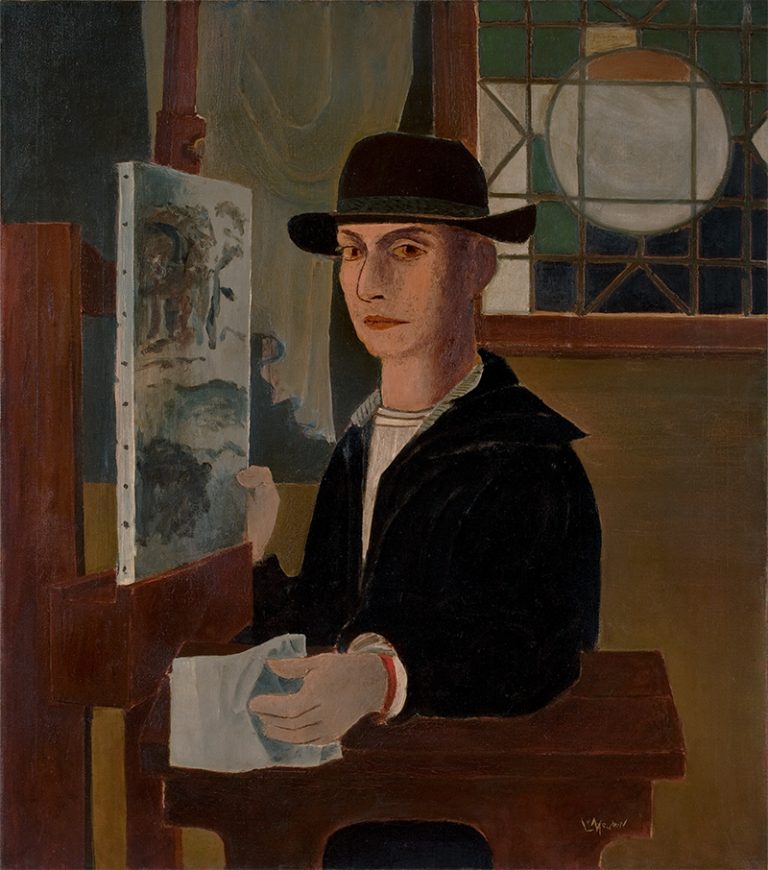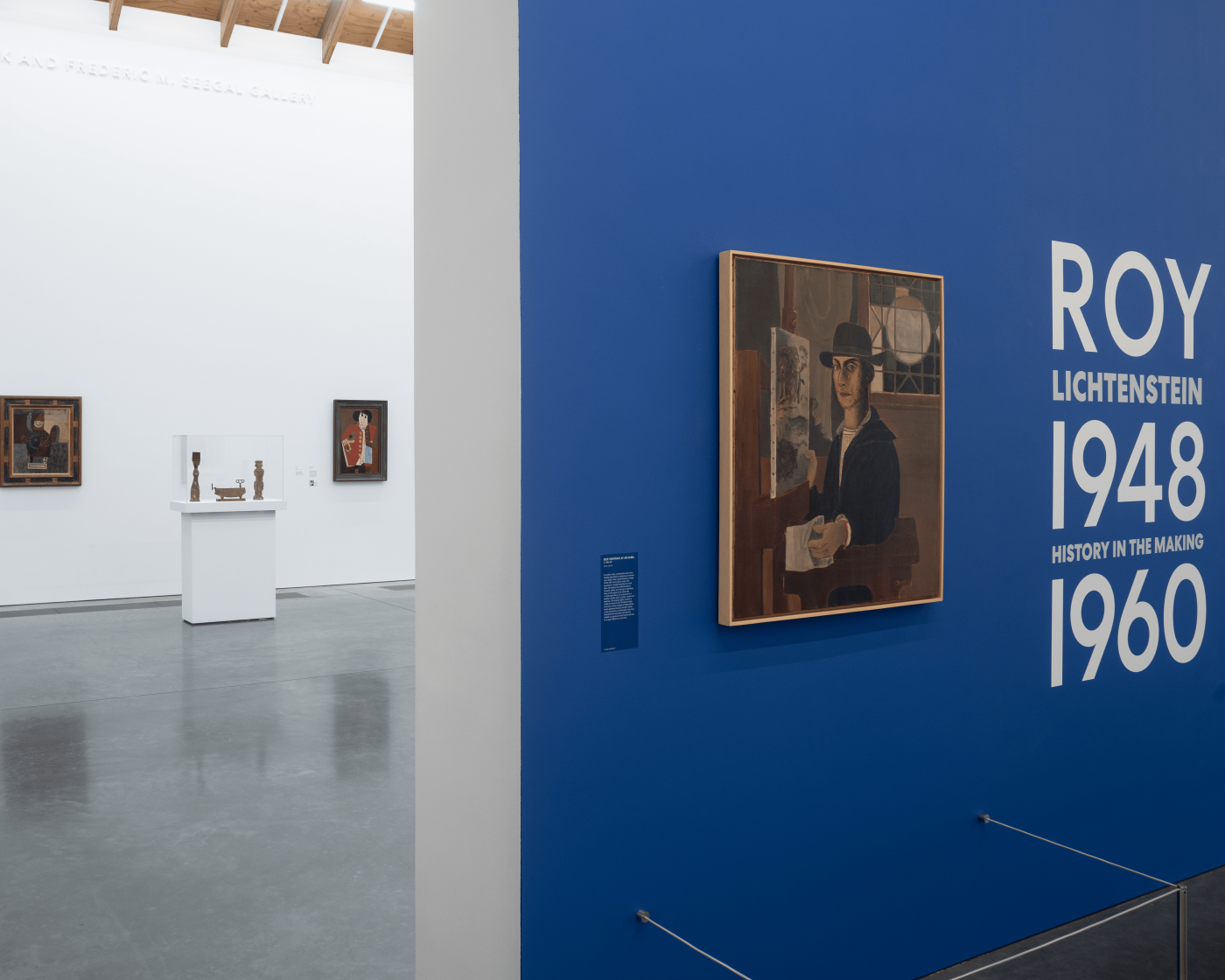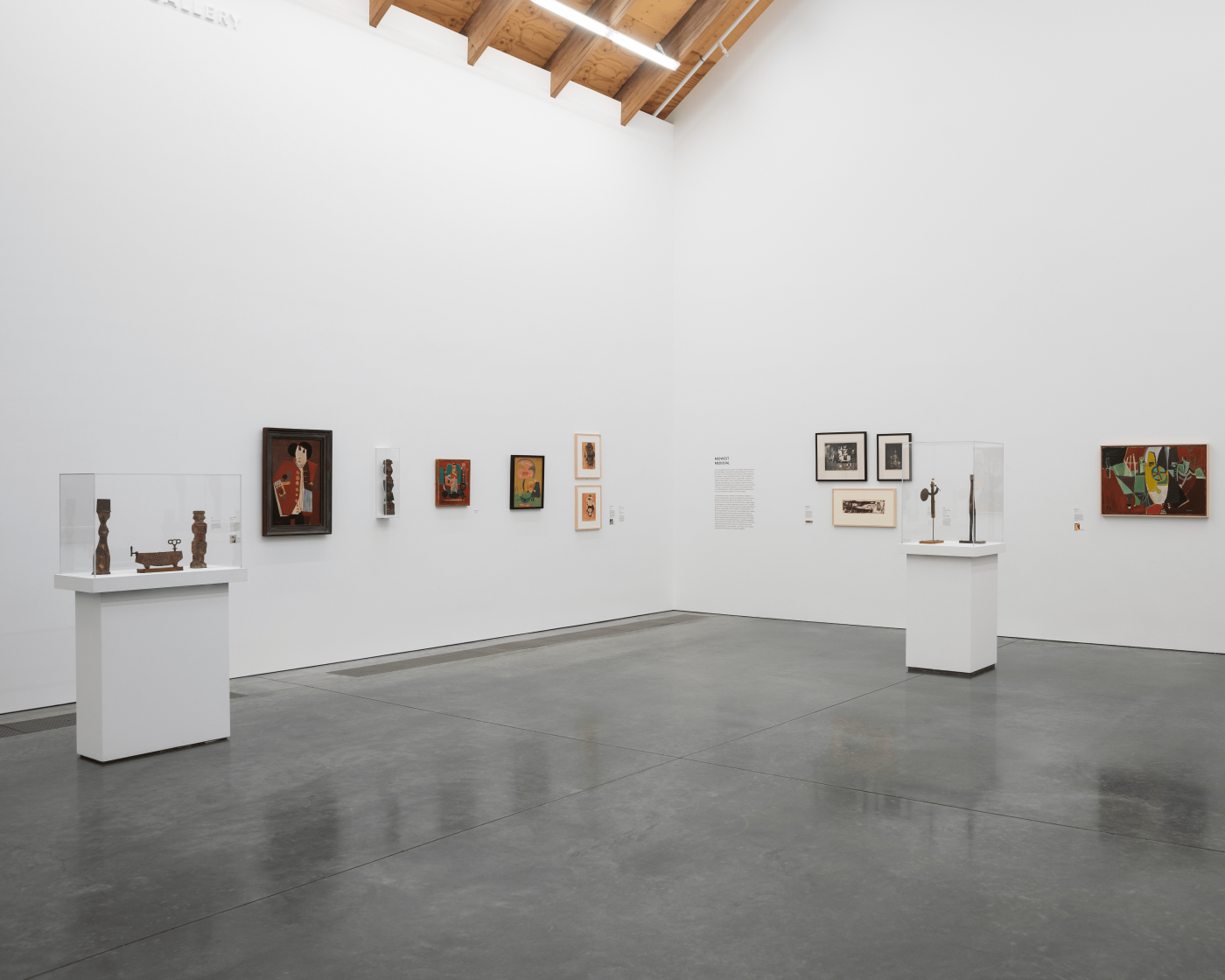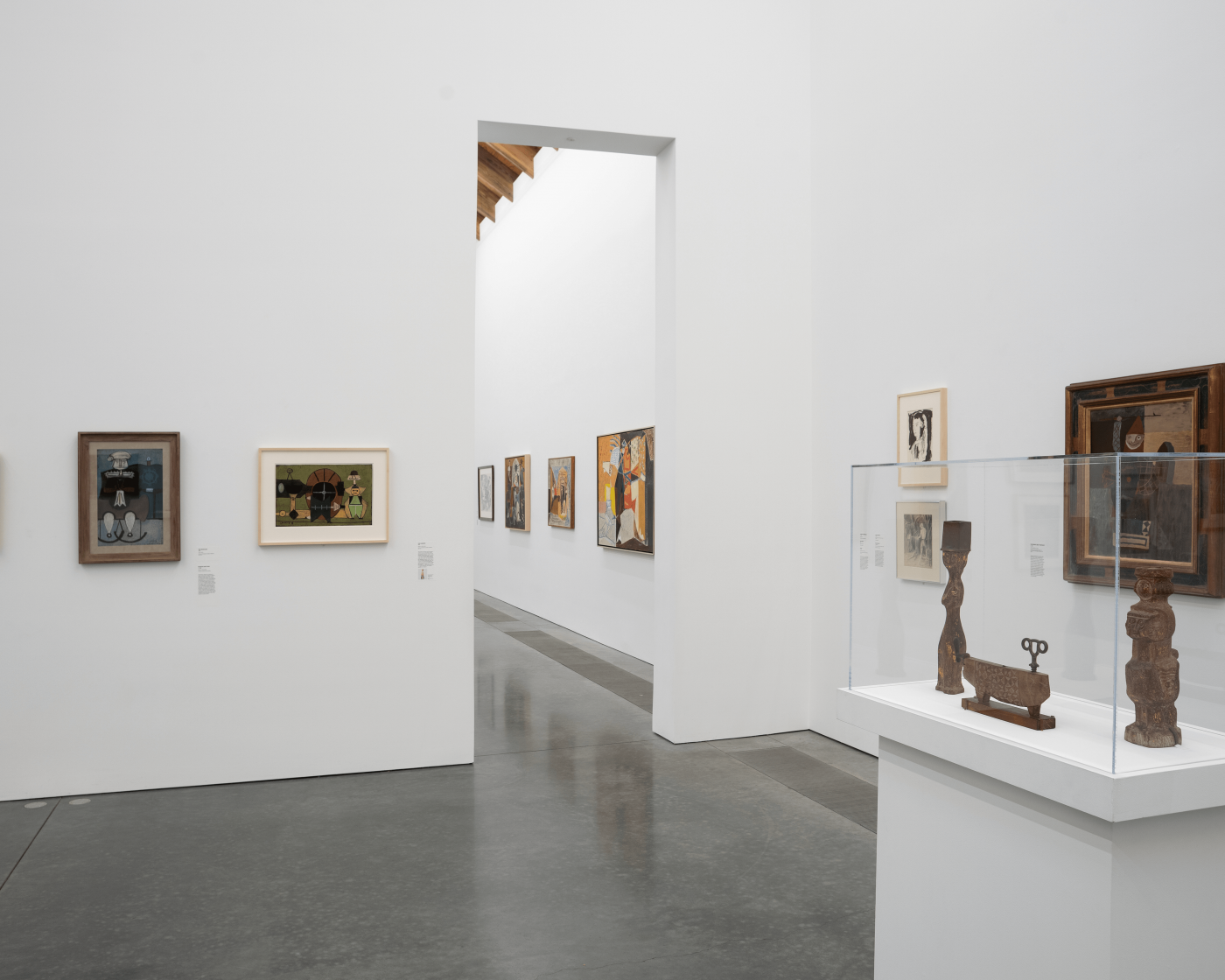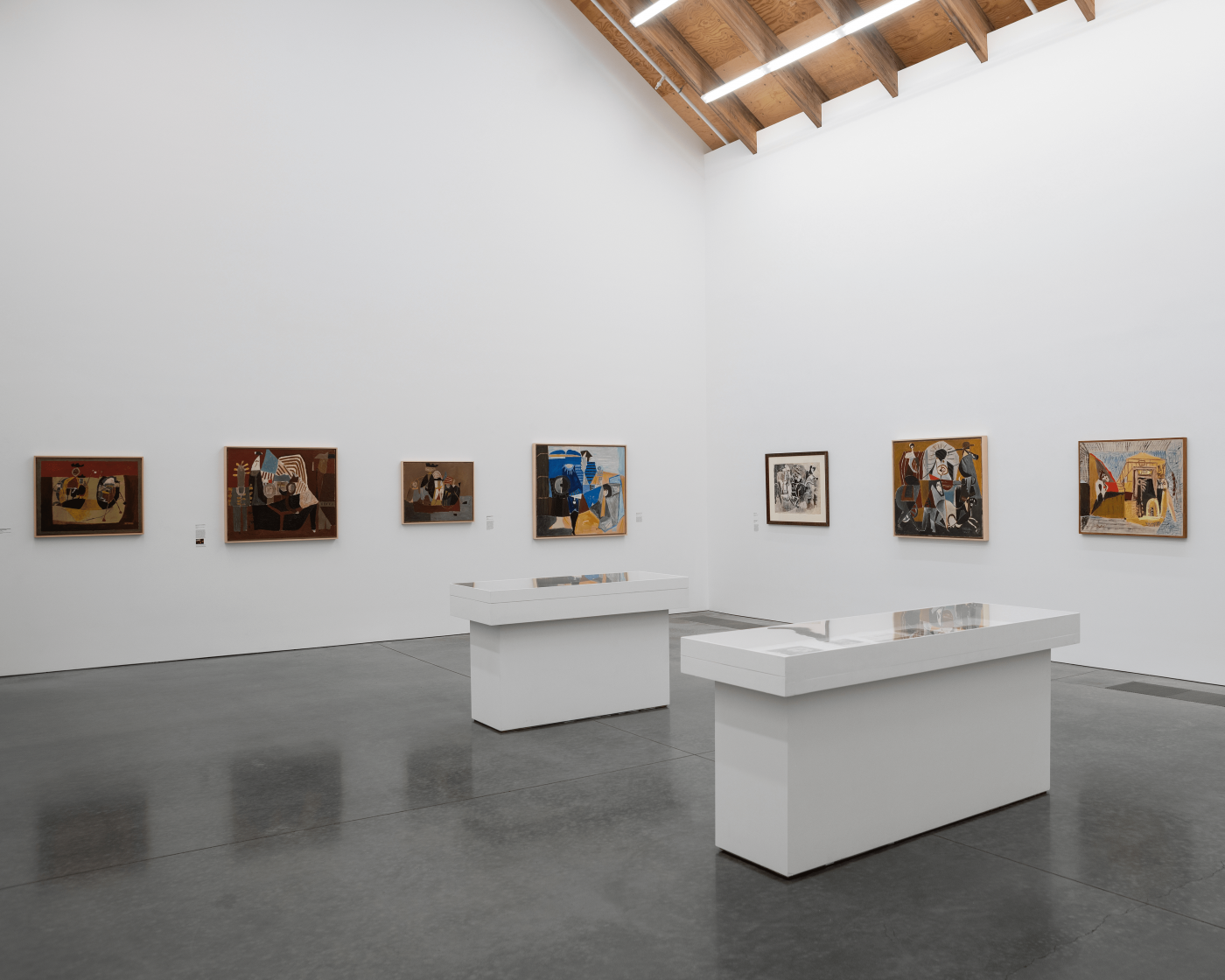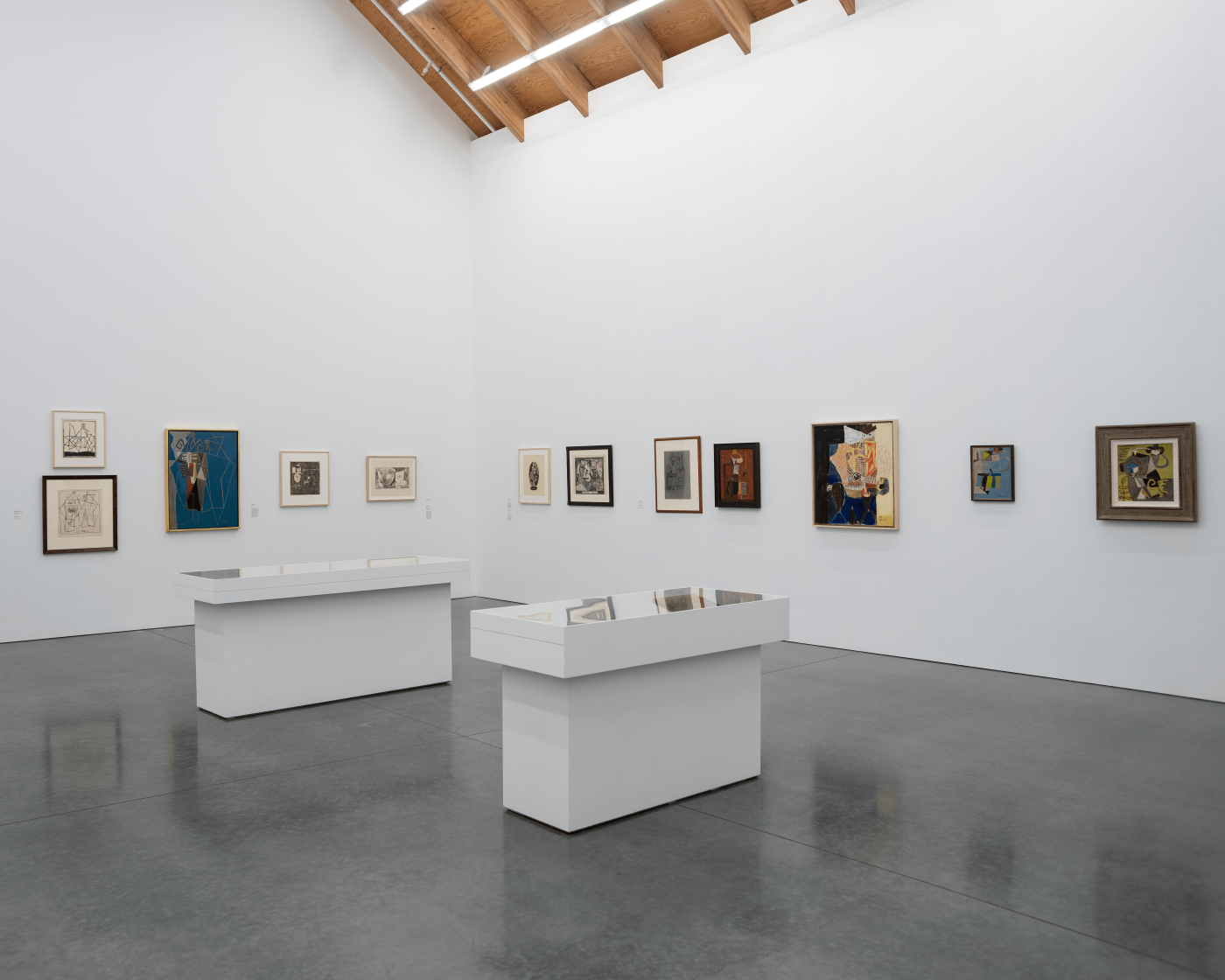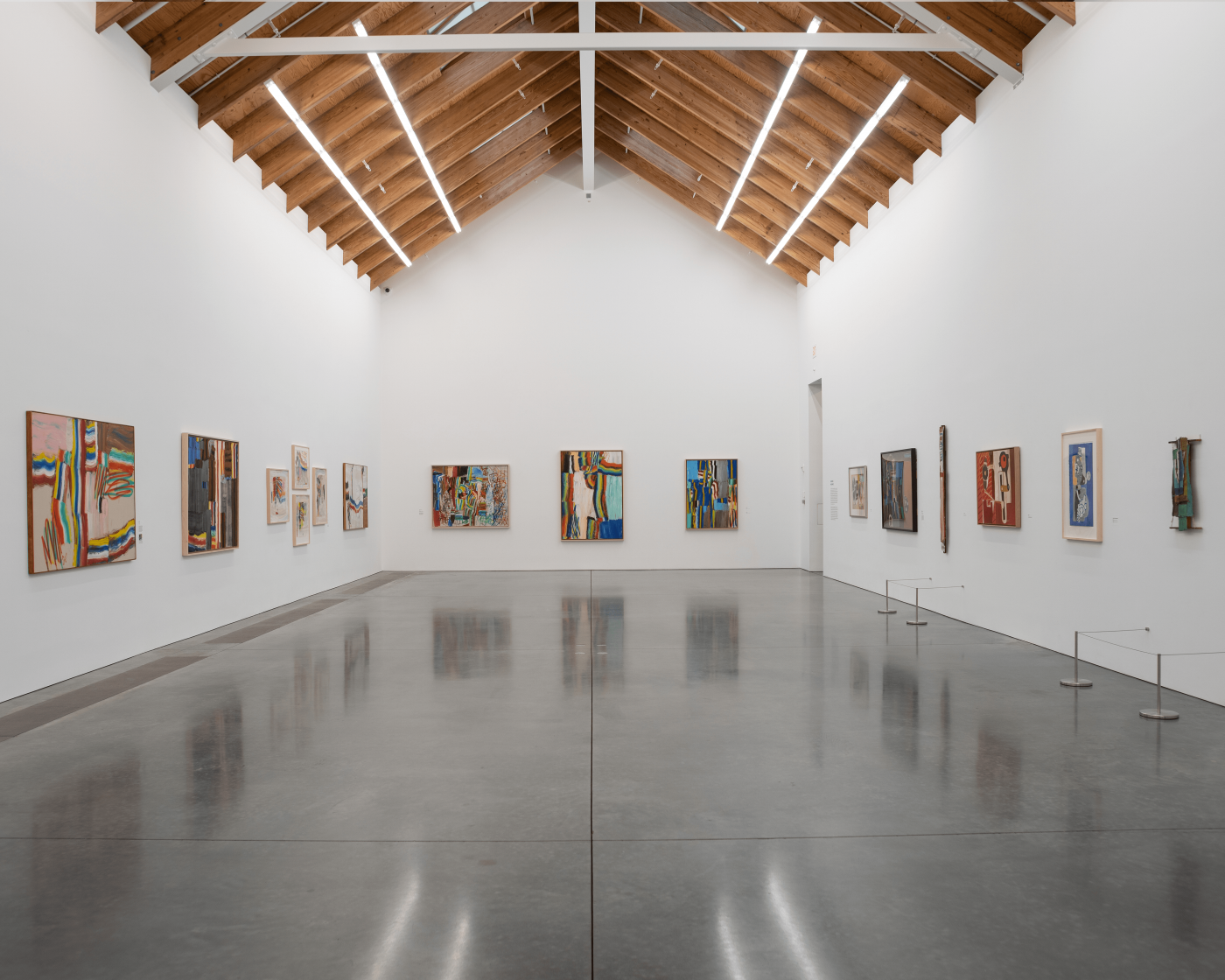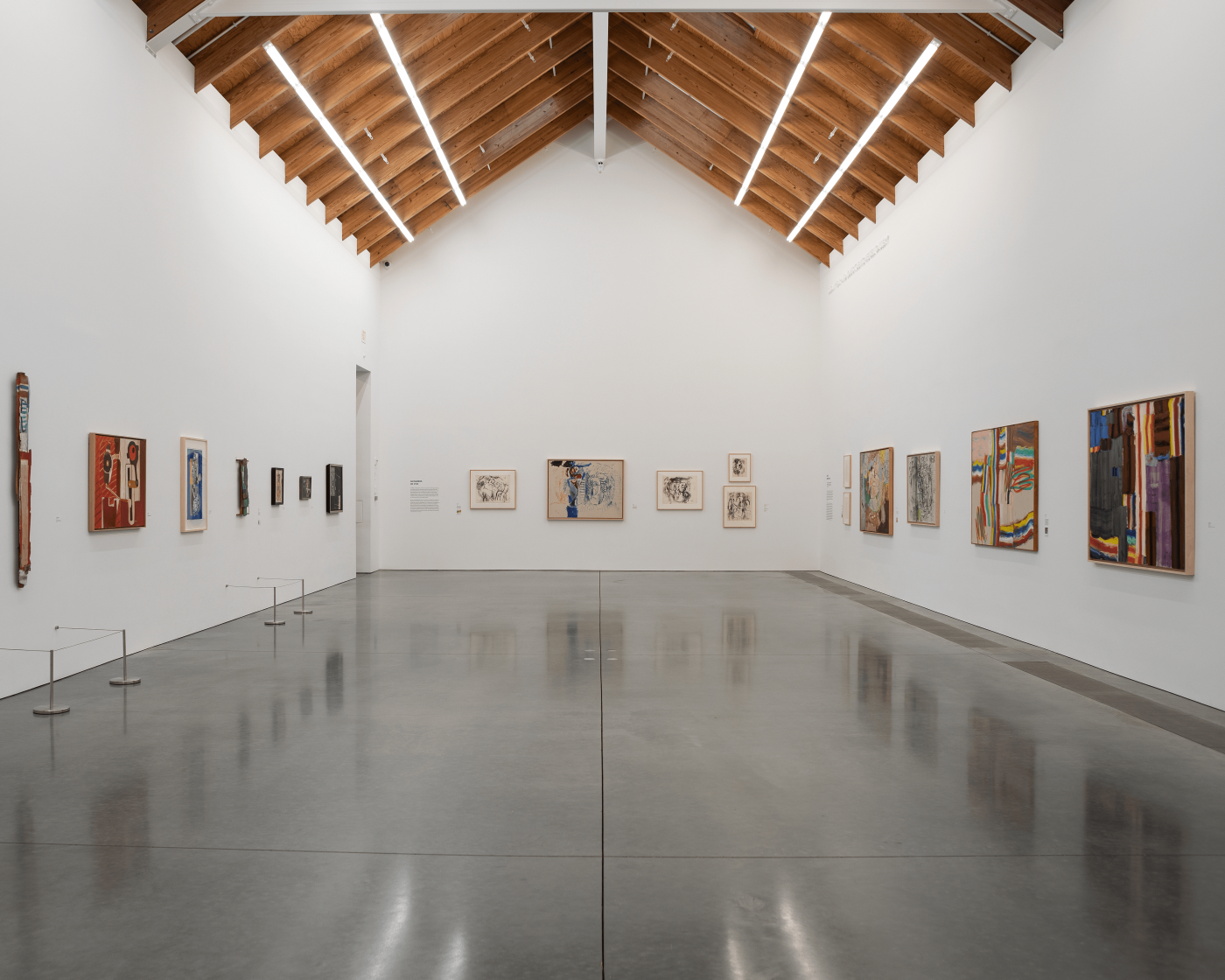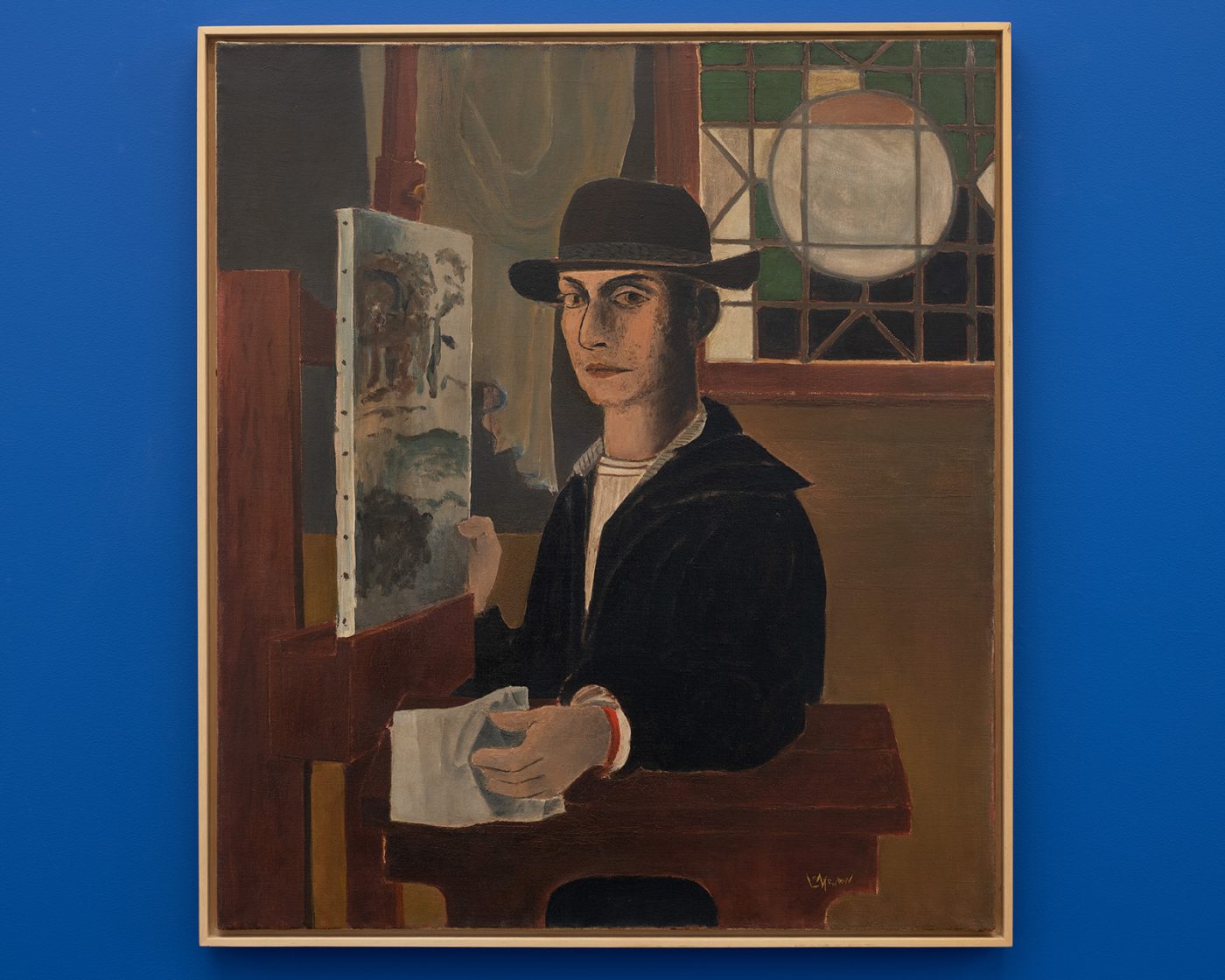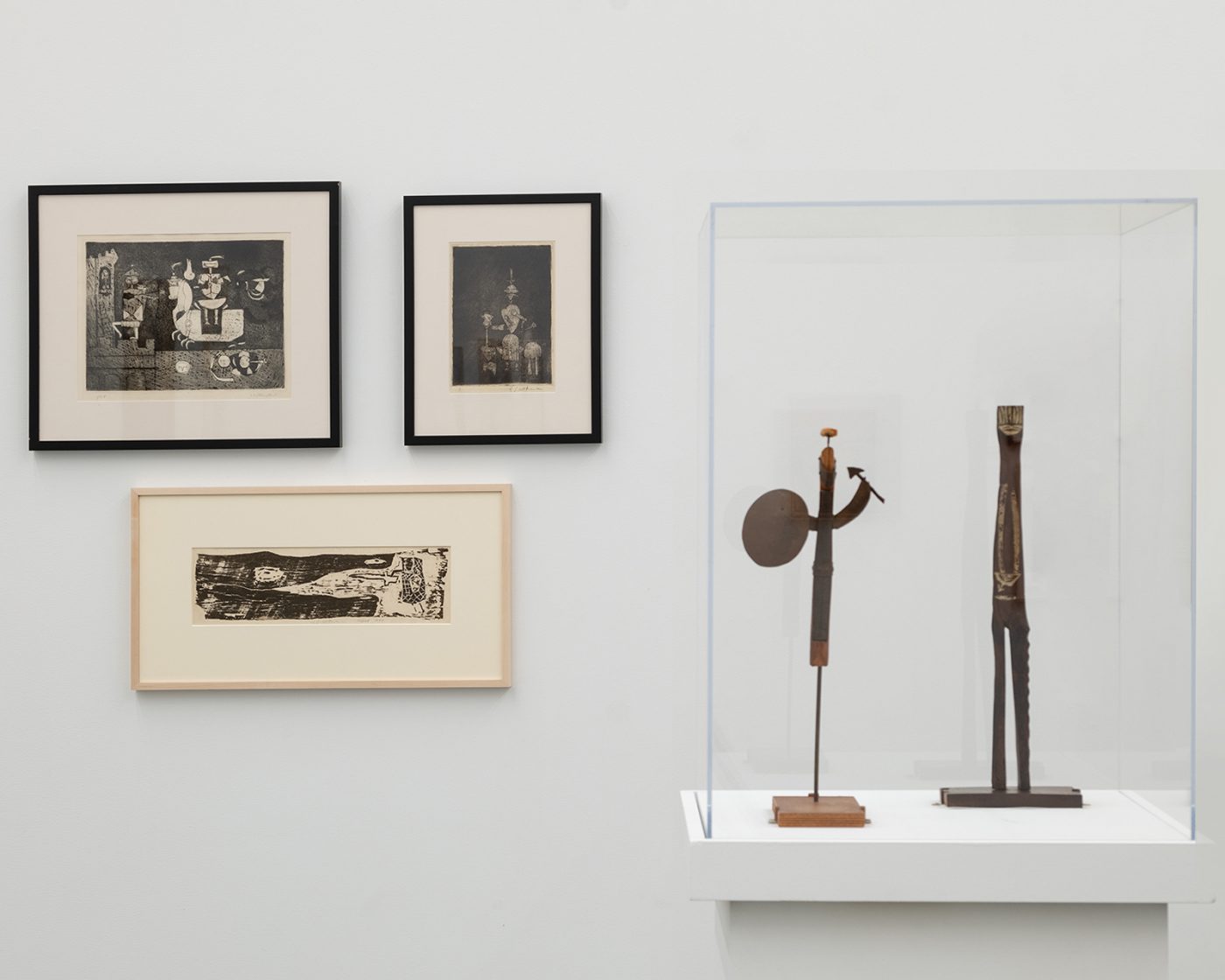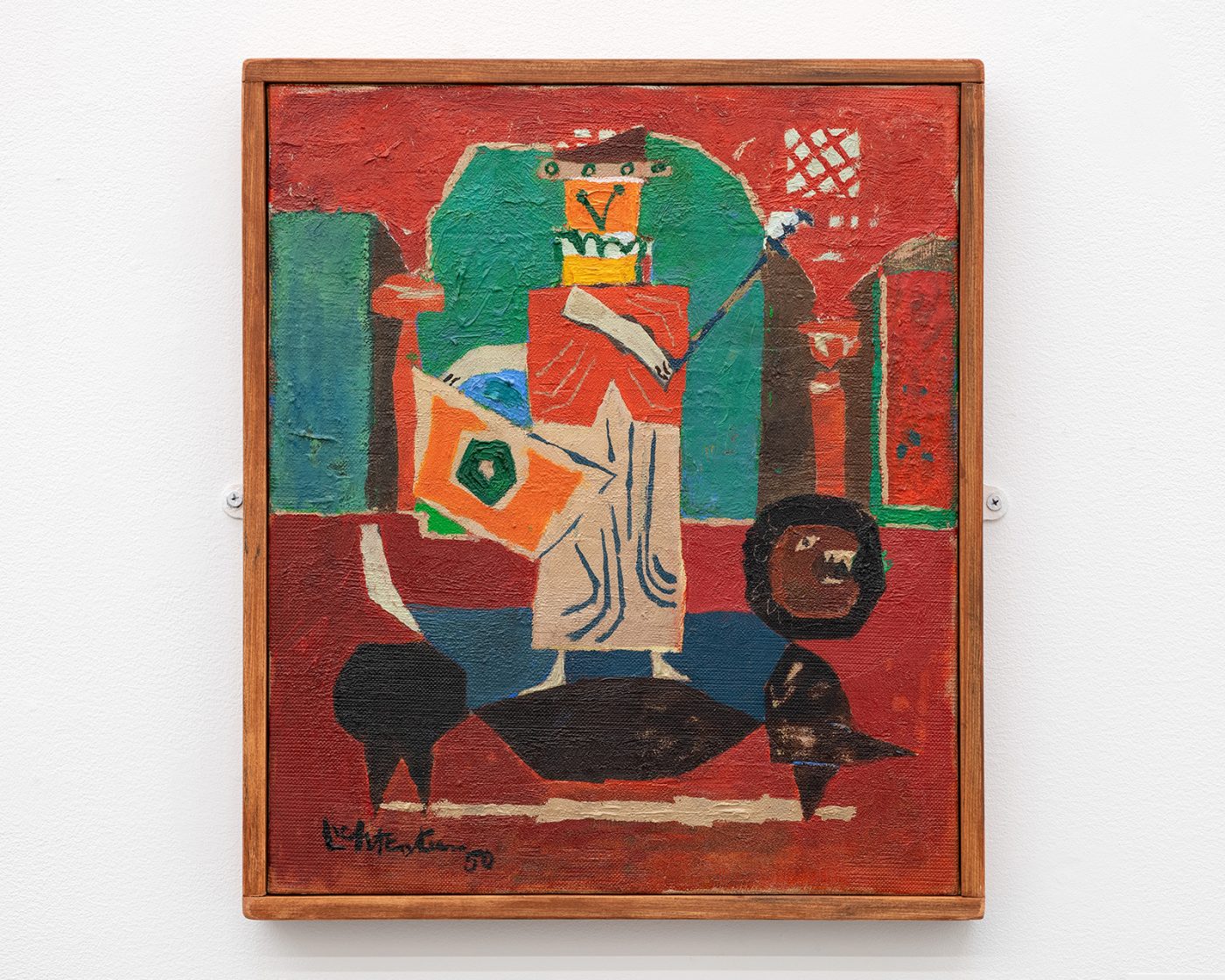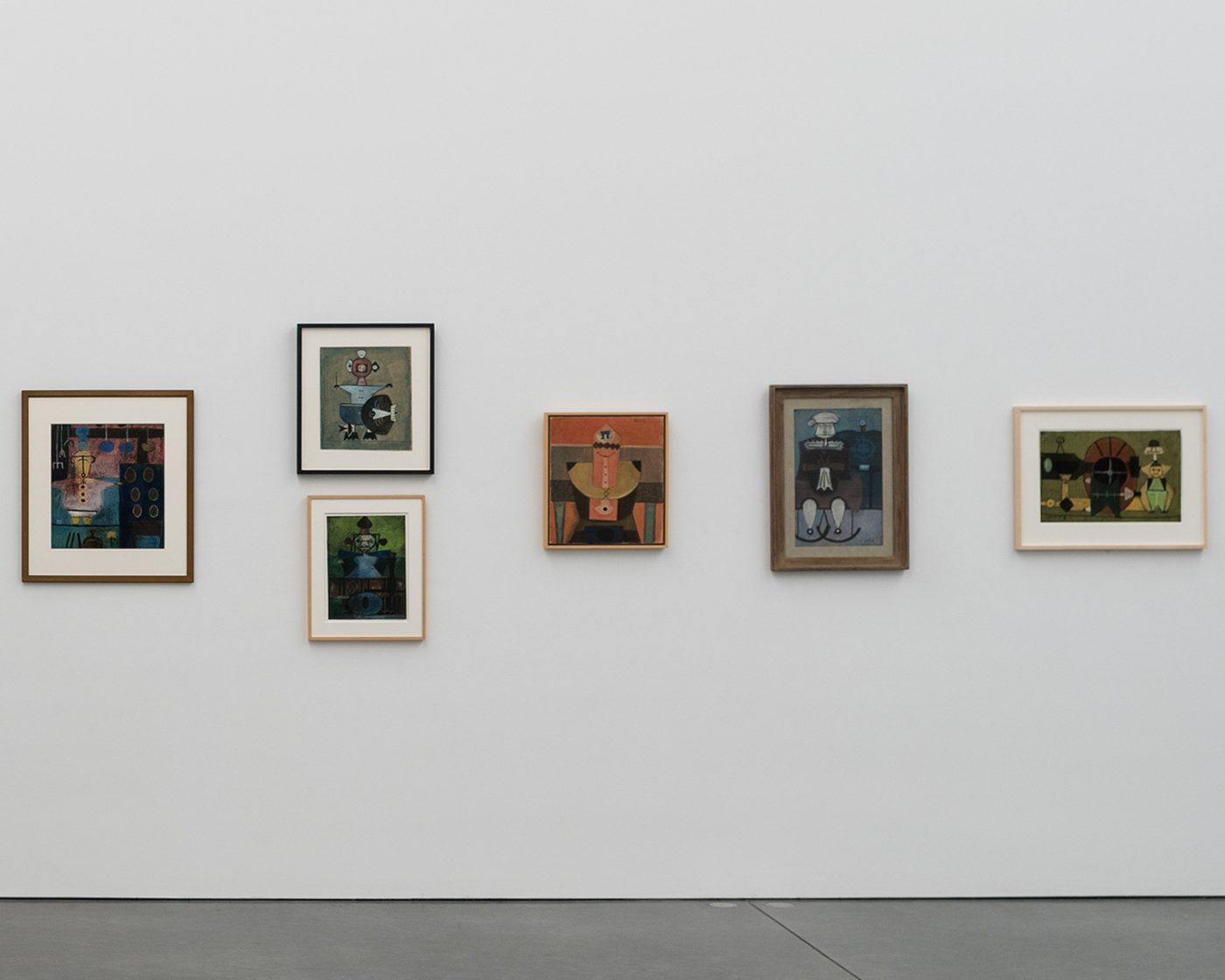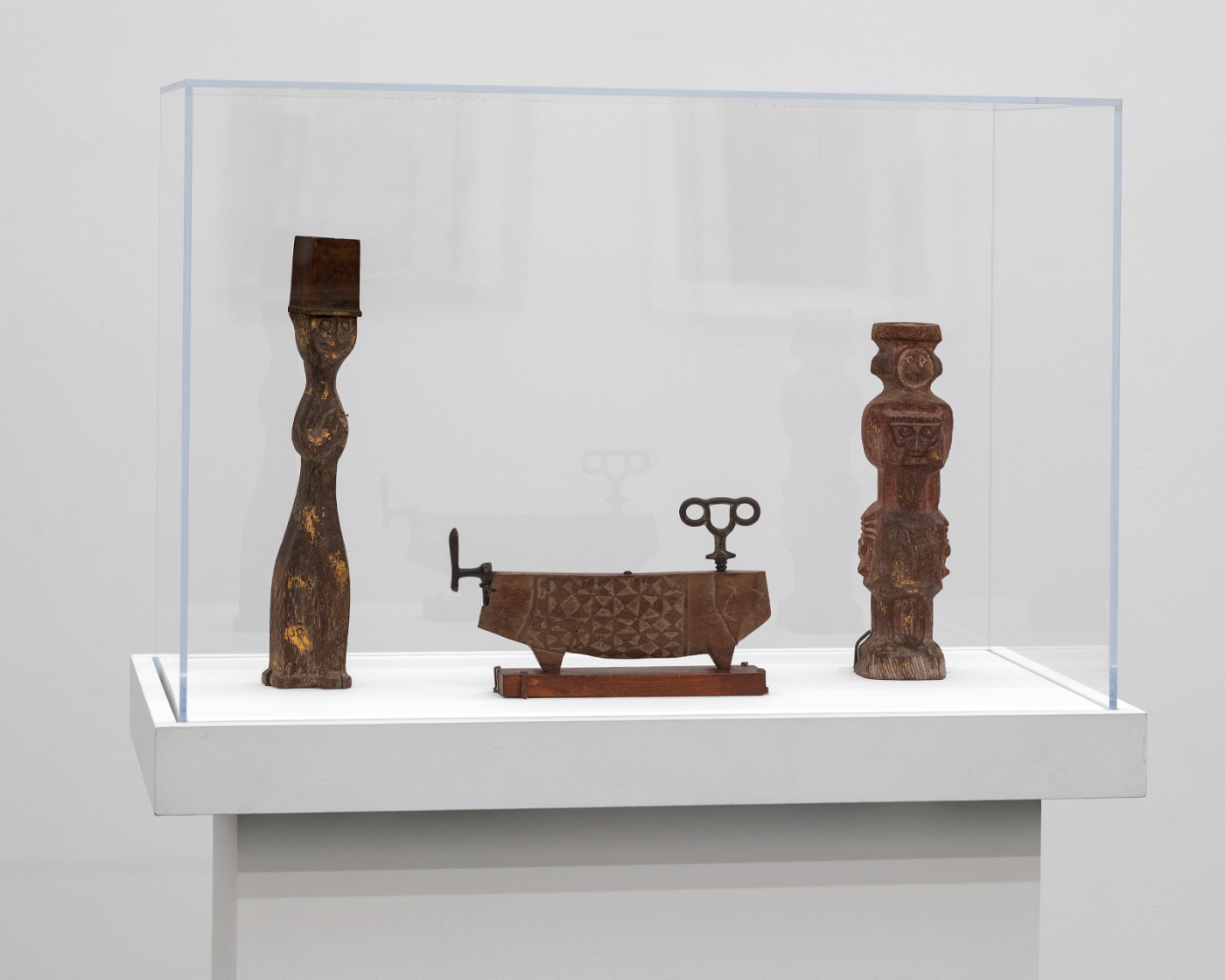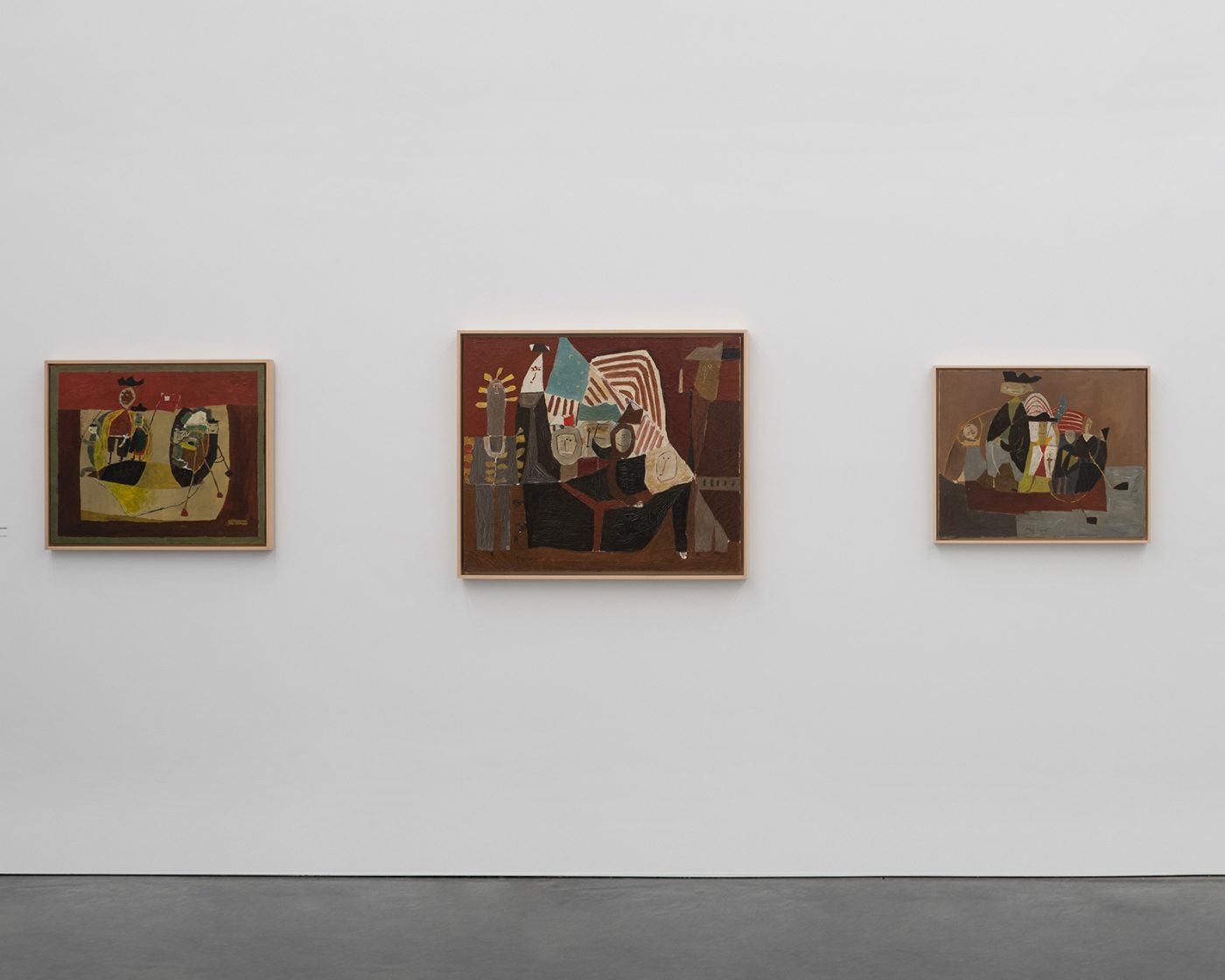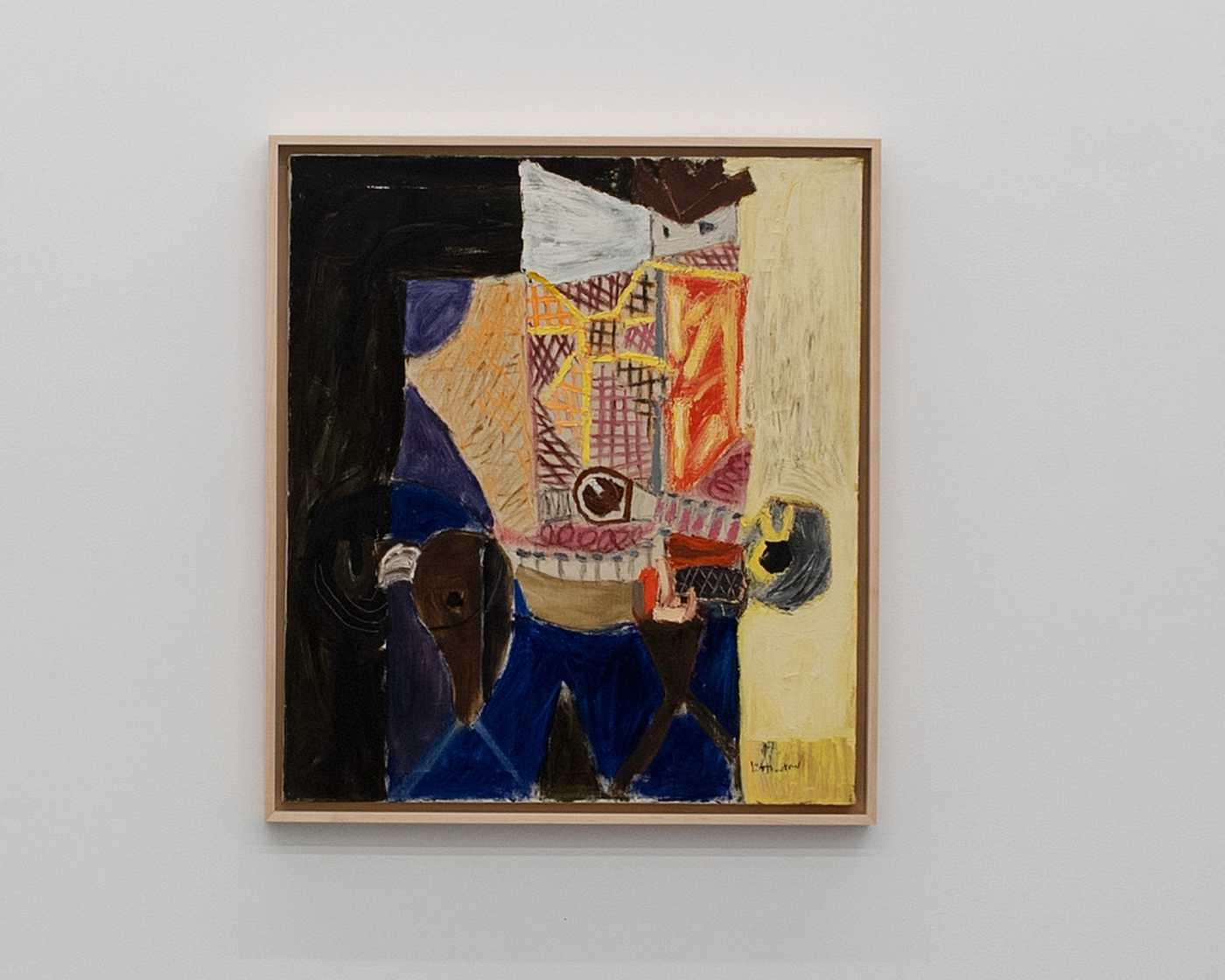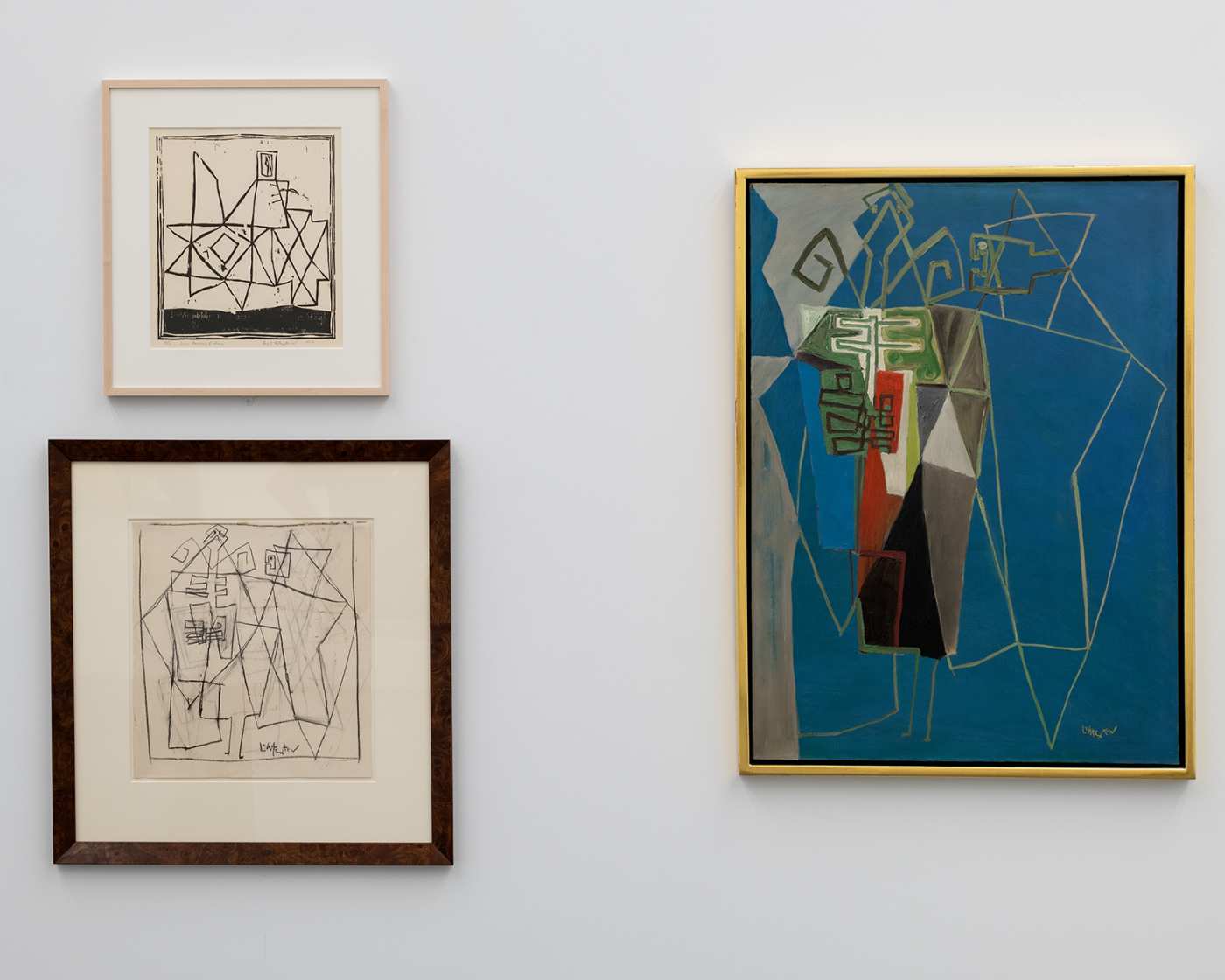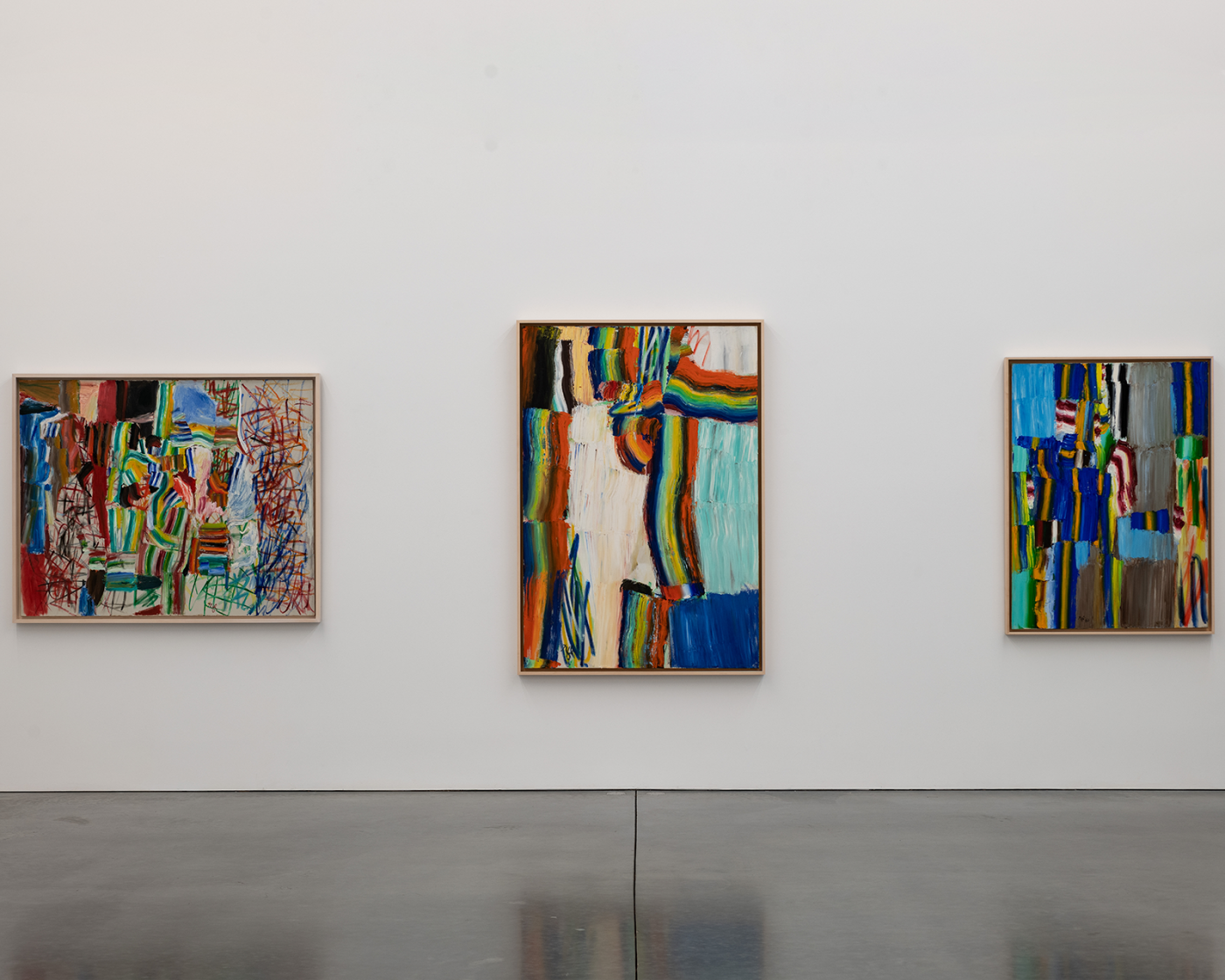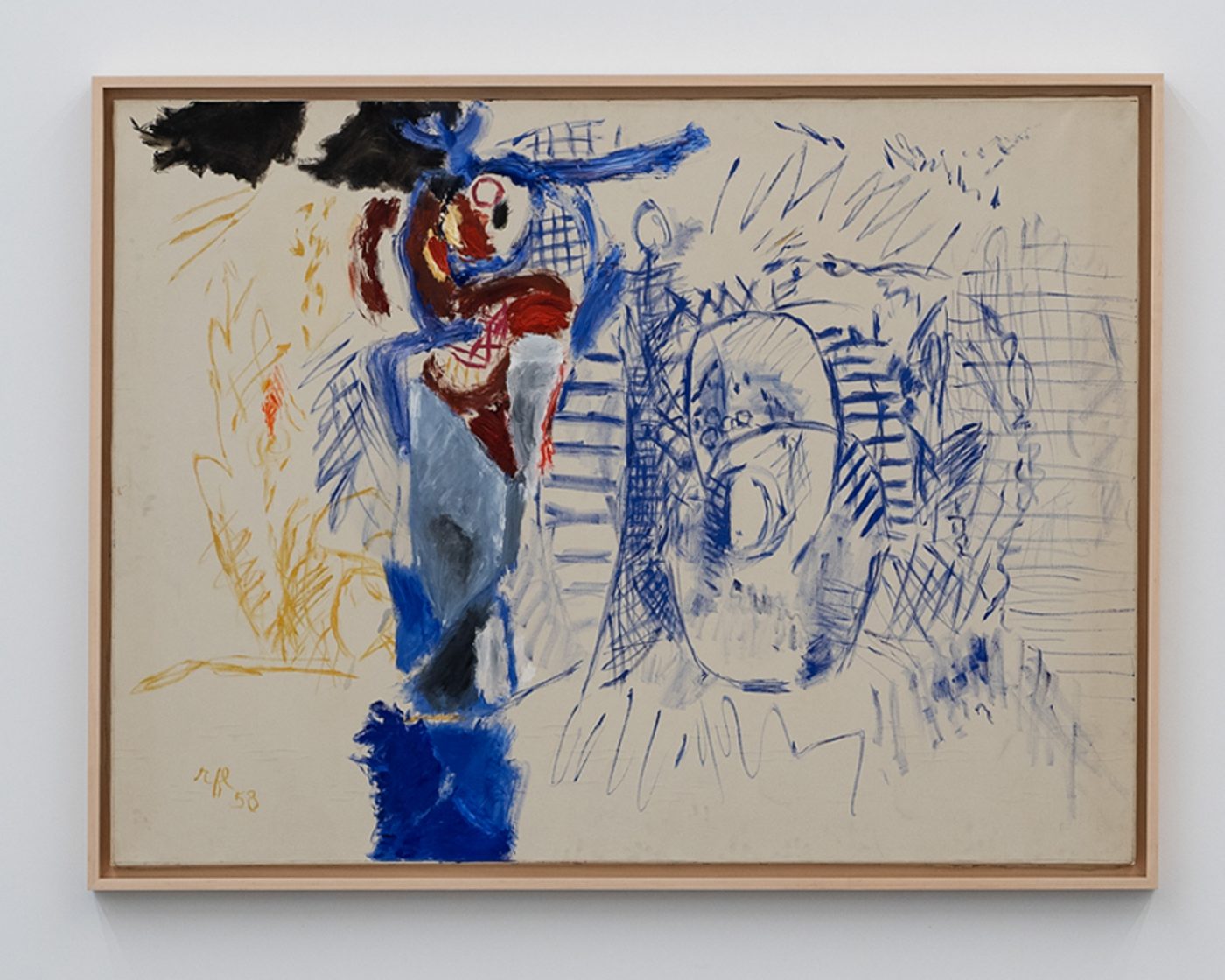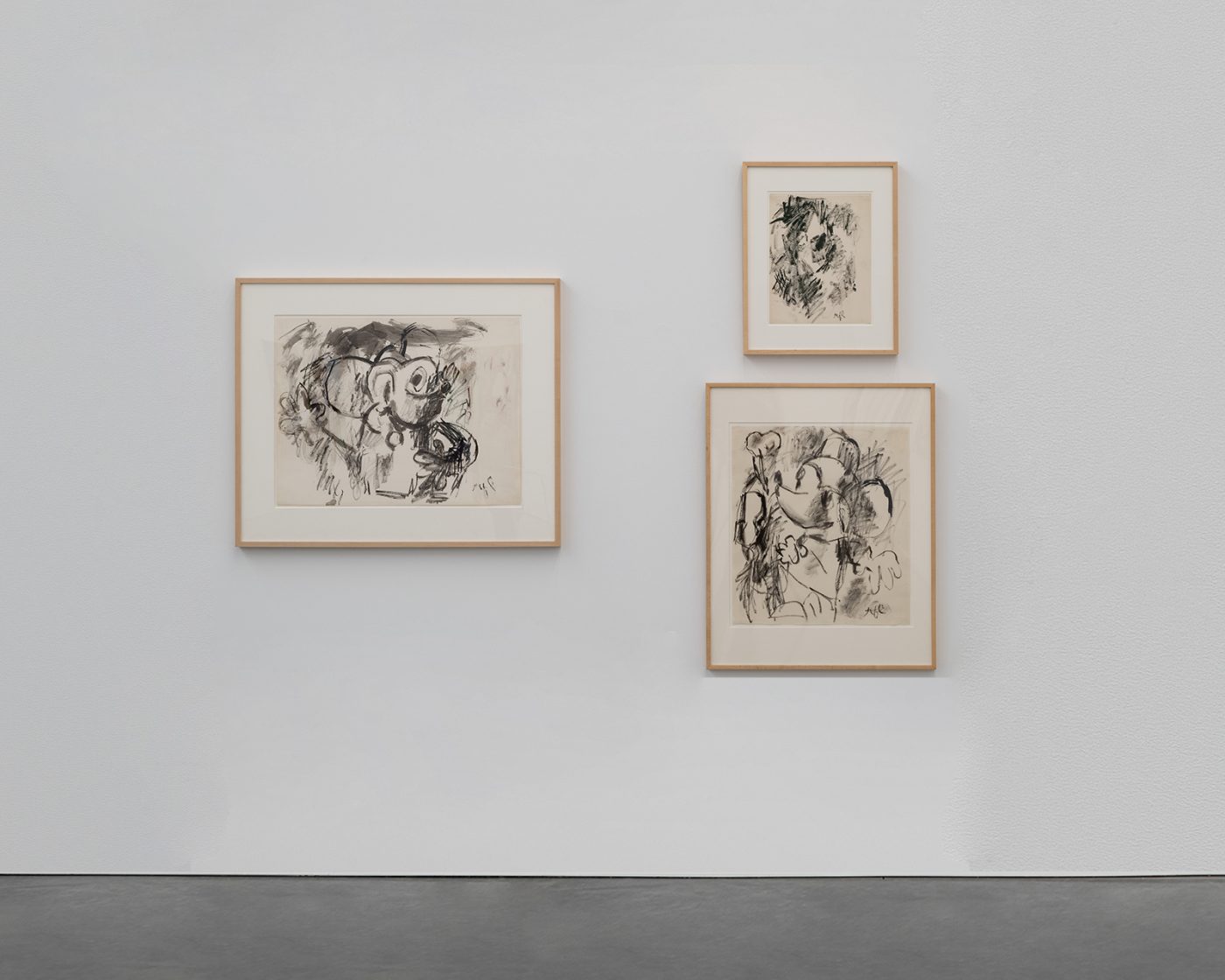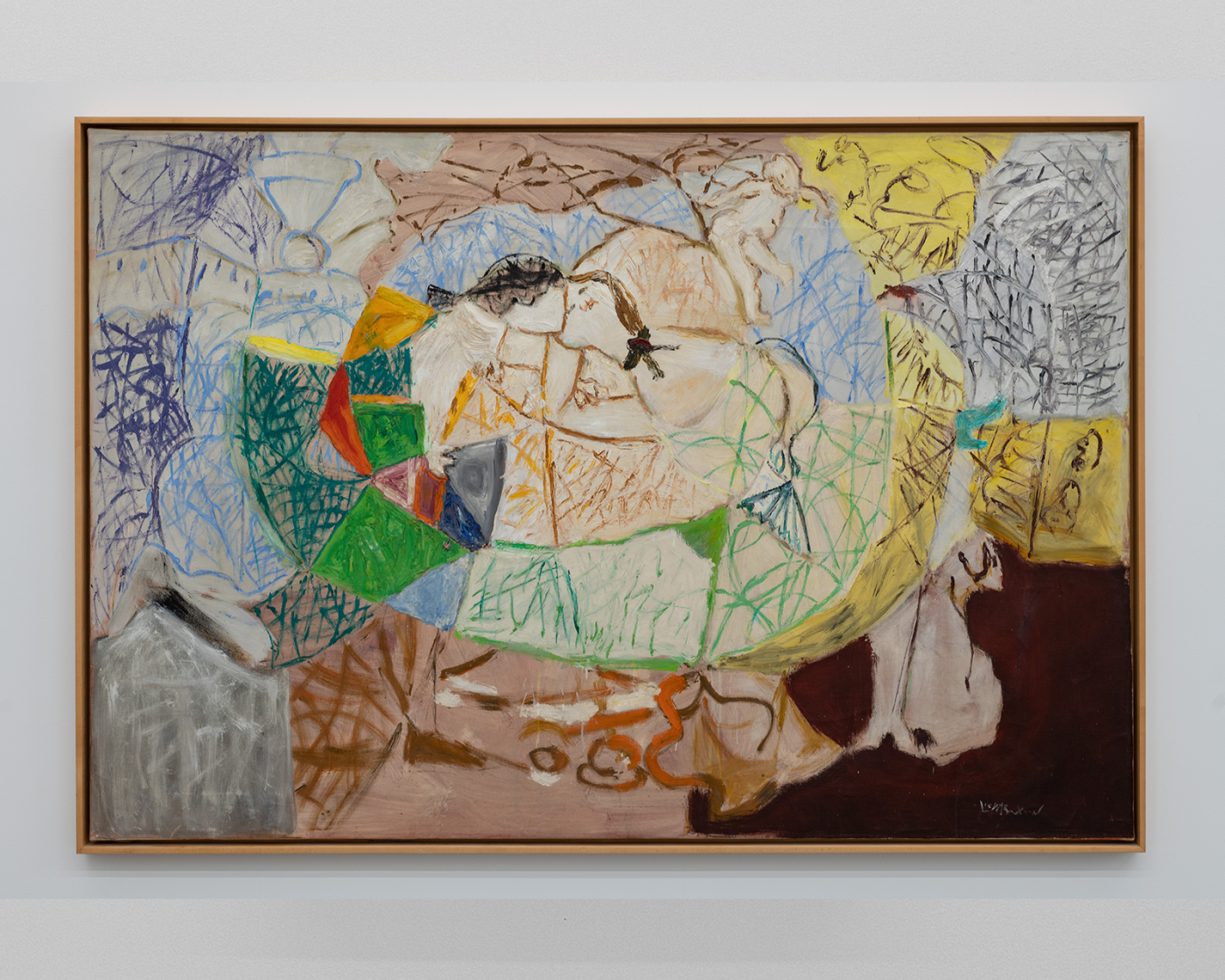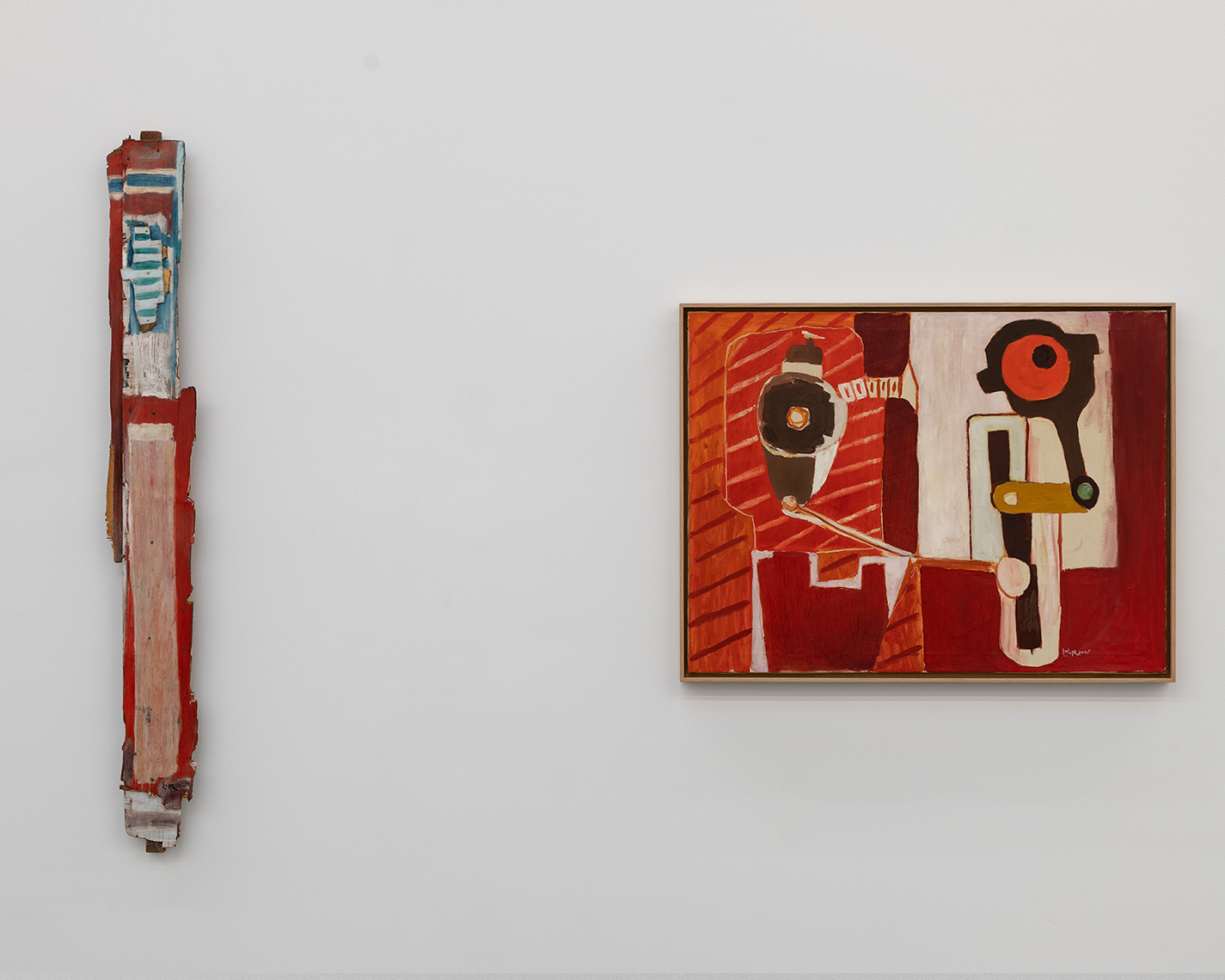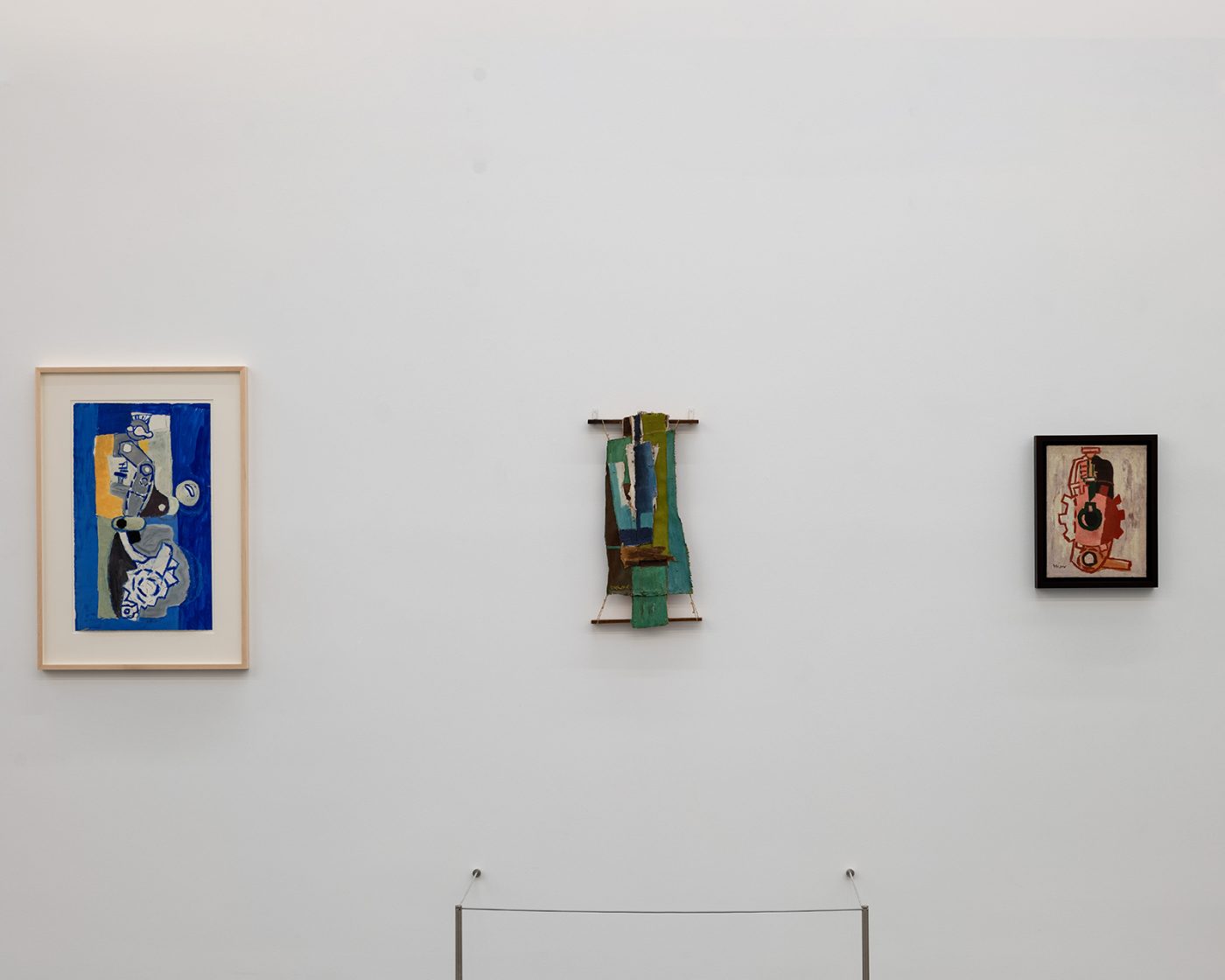Providing an illuminating prologue to the artist’s well-known comics-inspired imagery, History in the Making tells the largely overlooked story of Lichtenstein’s early career, when formal experimentation and a keen eye for irony irrevocably defined his art. Organized with the authorization of the Roy Lichtenstein Foundation, and featuring loans from museum and private collections nationally, this landmark exhibition will present approximately 80 works from the artist’s fruitful formative years, including paintings, drawings, sculptures, and prints, many never before seen by the public. Roy Lichtenstein: History in the Making will establish a new understanding of this period in 20th-century American art through a focused and in-depth consideration of one of its most influential figures. The exhibition is co-organized by the Colby College Museum of Art and the Nasher Museum of Art at Duke University.
“Before the Dot”
Roy Lichtenstein: History in the Making examines the period before the dot–that is, the artist’s signature use of Benday dots in his Pop paintings. The exhibition reveals how Pop art emerged in dialogue with European modernism, American history painting, and a diversity of vernacular sources.
The exhibition will also tell the story of Lichtenstein’s brief but instrumental flirtation with abstraction in 1959 and 1960. Coinciding with the mainstreaming of Abstract Expressionism, these paintings illustrate how the artist was inspired to engage with the movement’s pervasive influence, but not without inserting his characteristic humor and wit.
Born in New York City, Lichtenstein enrolled in Ohio State University in Columbus, where the progressive curriculum and a focus on visual perception influenced his irreverent response to American history and culture. The artist’s studies were interrupted when he served in the Army during World War II, allowing him to see some of the great European masterpieces in person. After he returned to Ohio, Lichtenstein quickly synthesized modern art styles to create an innovative and personalized body of work. By the early 1950s he was exhibiting regularly in New York and received some critical attention.
Before 1960, Lichtenstein’s art was filled with characteristic humor and evoked many of the themes that would become synonymous with his later career. He appropriated from earlier art and showed an avid interest in popular culture—important harbingers of his better-known work in the following decades. He was inspired by fairy tales, caricature, folk and children’s art. He drew on various forms of Americana, including representations of cowboys and Native Americans encountered in 19th-century paintings of the Great Plains, and the Disney cartoon characters Bugs Bunny, Donald Duck, and Mickey Mouse. These and other vernacular inspirations are the essential but little-known precursors to the artist’s appropriations of popular culture and his famous sourcing of comic books, advertisements, and newspapers later on.
Support
Roy Lichtenstein: History in the Making, 1948 – 1960 is co-organized by the Colby College Museum of Art, Waterville, Maine, and the Nasher Museum of Art at Duke University, Durham, North Carolina. The exhibition is co-curated by Elizabeth Finch, Lunder Curator of American Art at the Colby Museum; and Marshall N. Price, Nancy A. Nasher and David J. Haemisegger Curator of Modern and Contemporary Art at the Nasher Museum.
Support for this exhibition and its national tour is provided by the Roy Lichtenstein Foundation.
Additional catalogue support is provided by the Wyeth Foundation for American Art.
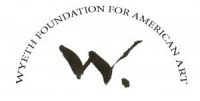
![]()
The presentation of Roy Lichtenstein: History in the Making, 1948-1960 at the Parrish Art Museum is made possible thanks to the generous support of the Roy Lichtenstein Foundation; The Liliane and Norman Peck Fund for Exhibitions; Bank of America Private Bank; Gagosian Gallery; Barbara and Richard Lane; Barbara Bertozzi Castelli; Ellen Cantrowitz; and Jacqueline Brody.


